What’s The Difference Between Swing Path And Swing Direction
Golf tips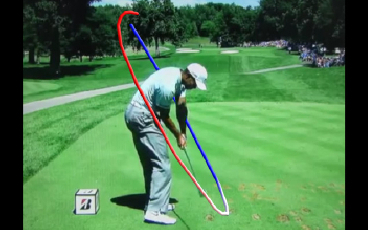
Did you know you can swing left and still hit a draw? This article will explain exactly why that is the case, and give you a deeper understanding of the swing arc.
Swing Circle
HEREI’ve said it before and I will say it again (as it is worth re-iterating).
As you swing a golf club around your body, if we were to trace the path the clubhead makes, it would be very circular (although not a perfect circle). See the brief video clip below.
Viewed from down-the line, this circle is tilted – some people would call this the swing plane – this swing plane changes subtly through different phases of the downswing.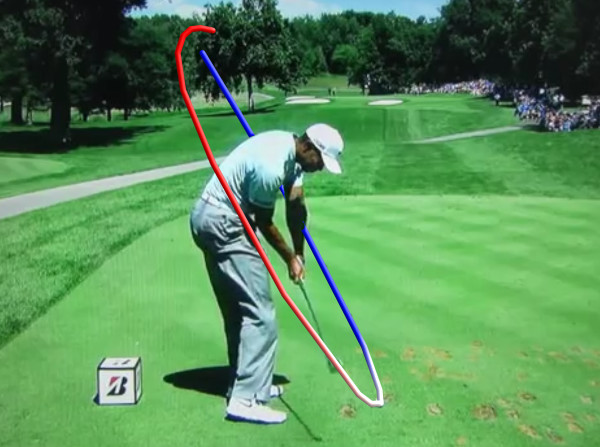
Because of this tilt, if we were to view the bottom of the swing circle from our own eyes, it would look like this.
In the below picture, the black line represents the lowest point of that swing arc, which the club will track through impact. Anything before this (red) and the club will be traveling down (steeper angle of attack). Anything after the low-point and the club will be traveling up (positive angle of attack).
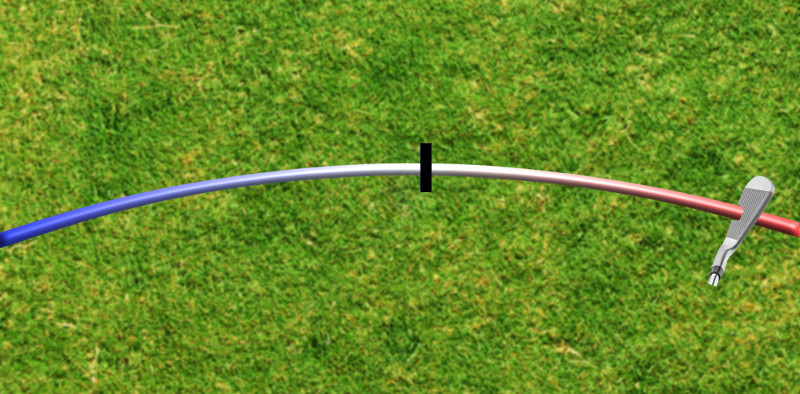
Swing Direction
“Swing-direction” is defined as the direction the clubhead is moving at the lowest point of the swing.
In the below example, the bottom of the swing is moving towards the target – or a neutral swing direction.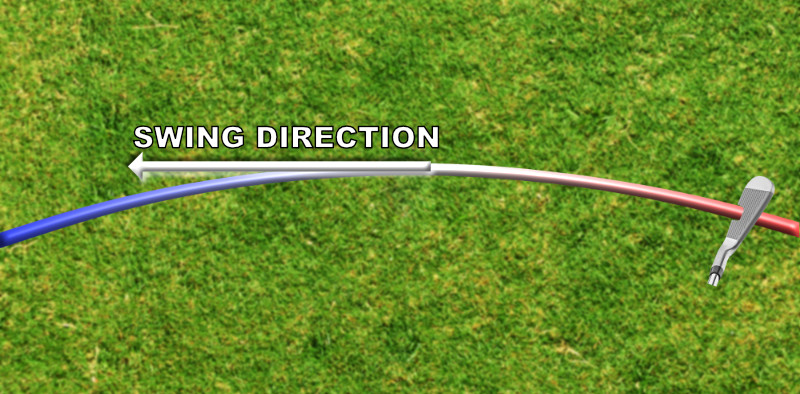
In the below picture, we see examples of both a more rightward and more leftward swing direction.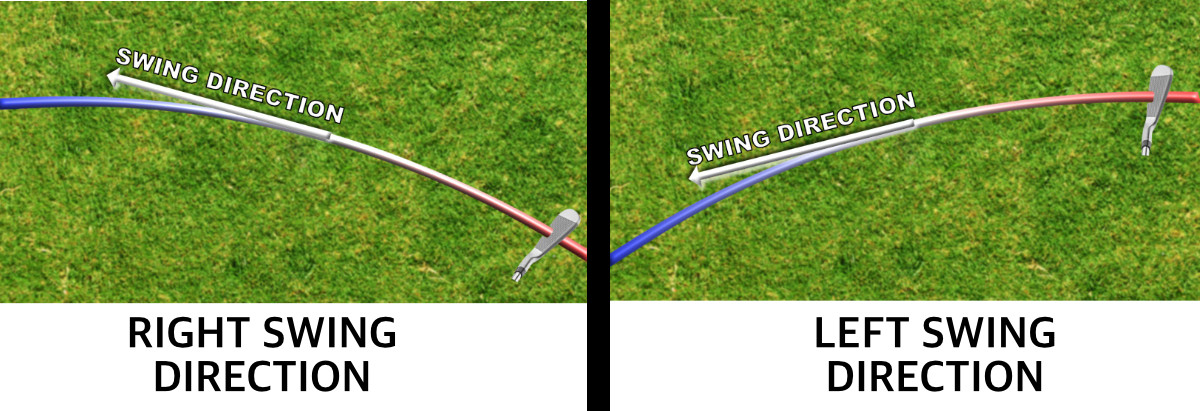
Swing Path
Swing direction and swing path are different (although can be the same).
Swing path is defined as the direction the clubhead is moving as it is in contact with the ball (at impact).
For example, in the below picture, we have a neutral swing direction. If the ball were struck at the lowest point of the swing, we could also say that the swing path is also neutral.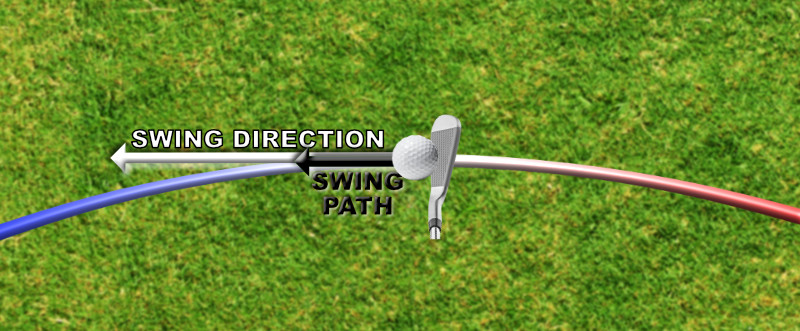
However, if the golf ball were struck on the part of the swing arc before low point, the club path is traveling more to the right – see below picture.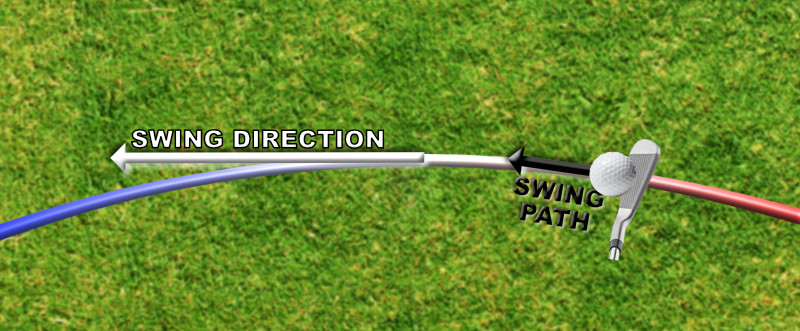
The reverse is true too. Any ball struck on the blue part of the arc (after low point) will have a club path which is traveling more left of the swing direction.
The Basic Rule
To summarize this rule,
- If the ball is struck before low point, the club path is moving more down (steeper angle of attack) and more to the right through impact (all else equal).
- If the ball is struck after the lowest point of the swing, the club path is moving more up (positive angle of attack) and more to the left through impact (all else equal).
Fixing Slices
For this reason, the route to fixing a slicer can be important.
A slicer of the ball will typically have a left (out to in) swing path.
Sure, swinging the club more to right field can change swing path, but it will also have an effect on low point position. Many slicers cannot change their swing direction because of this (as, when they do, they are greeted with fat and thin shots).
However, shifting the lowest point of the swing more forward might not only improve swing path (moving it more in-to-out), but can positively affect low point position, allowing the player to strike better iron shots.
We always have to make sure the clubface is in an appropriate direction at impact too. An in-to-out club path will not create a draw unless the clubface is closed to it (more left of it).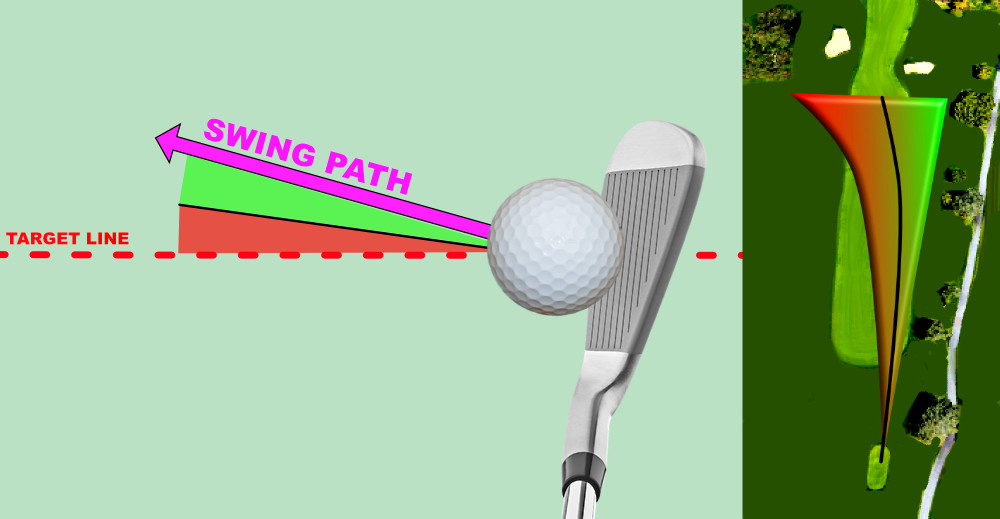
If the swing path is to the right, a player will need to present the clubface close to the black line if they want a functional draw (see above pic. These directional factors are described in detail in The Practice Manual – The Ultimate Guide for Golfers.
Quality Strikes
As quality iron shots are always struck on the downward part of the swing arc (before low point), we can say that the swing path for a good player is always more to the right of their swing direction.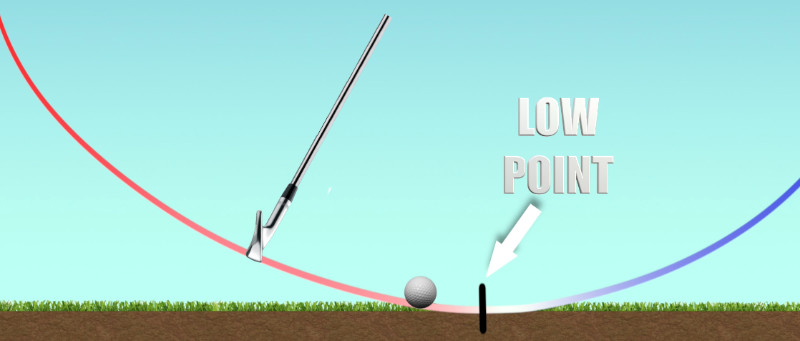
The low point for a well-struck shot with an iron will be in front of the golf ball.
This is how a good player can have a divot that looks left, yet the ball draws (suggesting that the swing path was to the right at impact).
One of the reasons I created The Strike Plan was to help players improve their quality of strike (with irons, driver, woods and hybrids).
Through improvements in low-point position, and understanding how swing direction relates, players have seen quick improvements in their strike quality, as well as lower scores.

